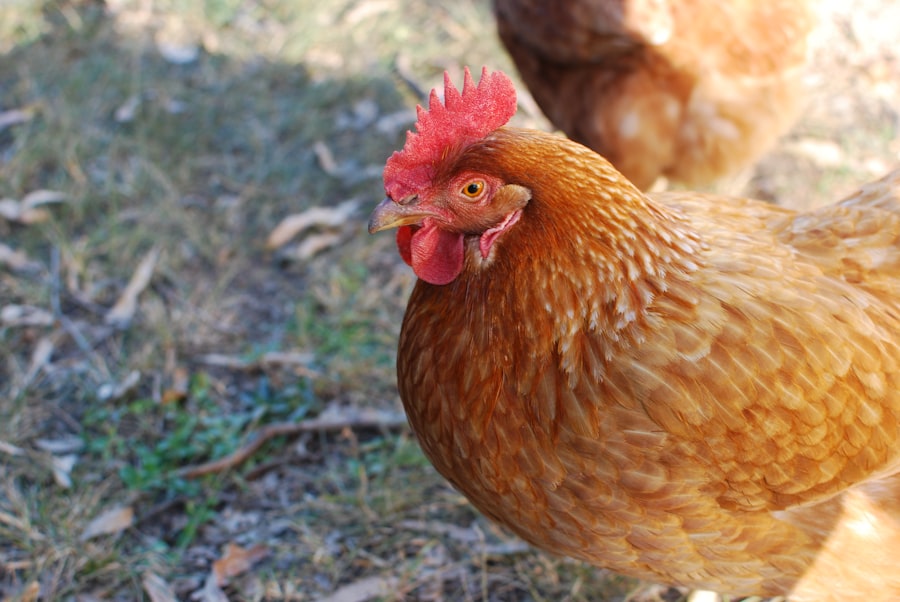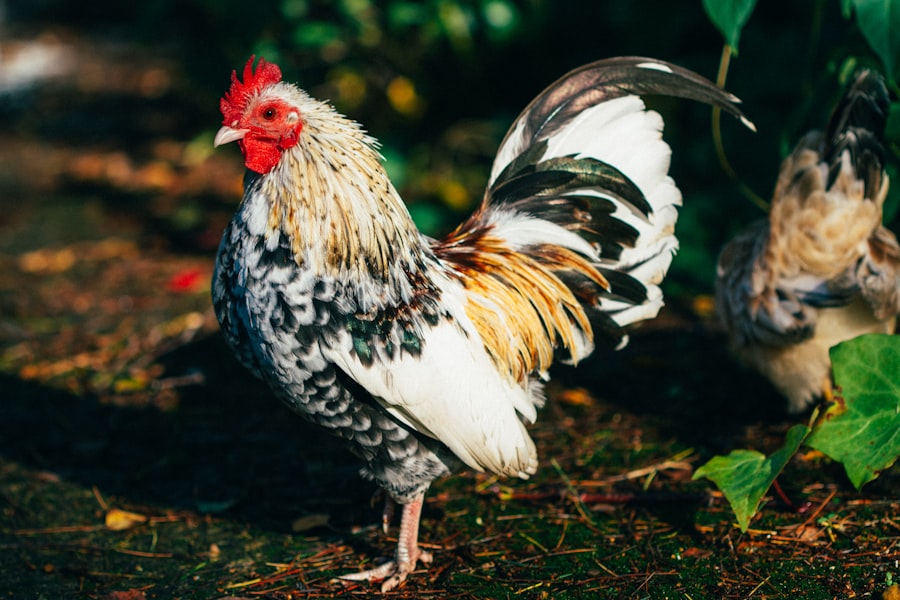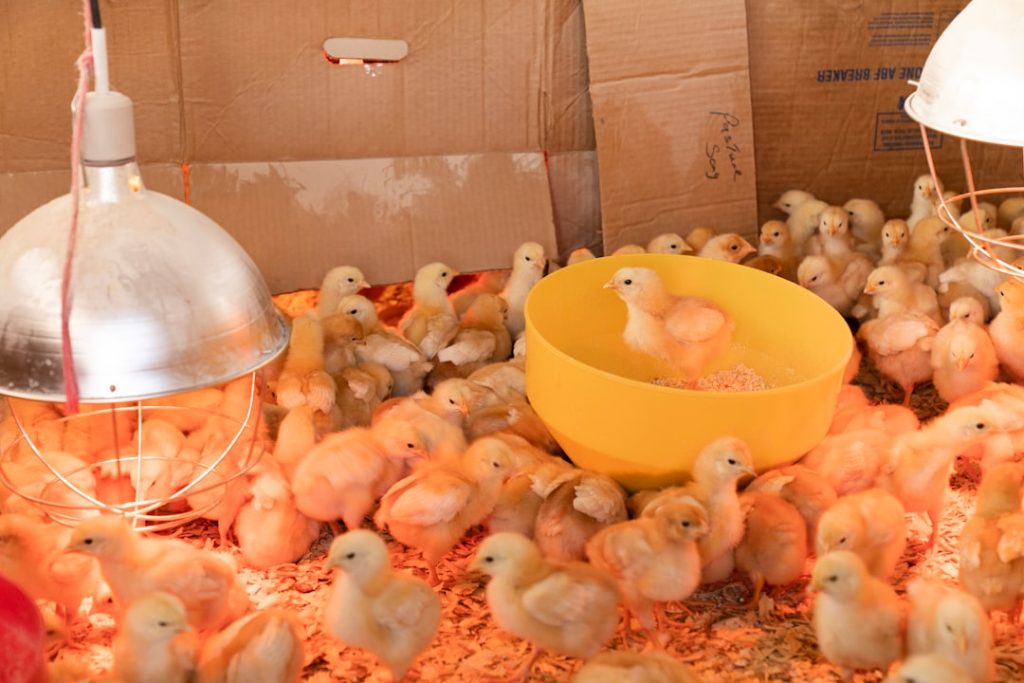Space requirements are essential for maintaining the health and well-being of chickens. Adequate space allows chickens to move freely, exercise, and engage in natural behaviors such as scratching and dust bathing. Proper spacing also prevents overcrowding, which can lead to stress, aggression, and disease transmission within the flock.
When planning a chicken coop or run, it is important to consider both indoor and outdoor space requirements. For indoor space, the general guideline is to provide a minimum of 2-3 square feet per chicken in the coop. This ensures sufficient room for movement, roosting, and egg-laying.
Outdoor runs should offer at least 8-10 square feet per chicken to allow for foraging and exploration. These figures represent minimum space requirements, and providing additional space can further enhance the flock’s overall well-being. Indoor areas should accommodate comfortable movement and nesting, while outdoor spaces should facilitate foraging and exploration.
By meeting or exceeding these space requirements, chicken owners can create a healthy and sustainable environment that promotes the thriving of their flock.
Table of Contents
- 1 Calculating the Number of Chickens per Square Foot
- 2 Considering the Breed and Size of Chickens
- 3 Factoring in Roosting and Nesting Space
- 4 Accounting for Outdoor Access and Free-Range
- 5 Managing the Health and Behavior of Chickens
- 6 Complying with Local Zoning and Regulations
- 7 FAQs
- 7.1 What factors should I consider when determining how many chickens I can keep in my coop?
- 7.2 What is the general rule of thumb for determining the number of chickens to keep in a coop?
- 7.3 What are the consequences of overcrowding chickens in a coop?
- 7.4 Are there any legal restrictions on the number of chickens I can keep in my coop?
- 7.5 How can I maximize the number of chickens I can keep in my coop without overcrowding them?
Key Takeaways
- Understanding the space requirements is crucial for raising healthy and happy chickens.
- Calculating the number of chickens per square foot helps in preventing overcrowding and ensuring adequate space for each bird.
- Considering the breed and size of chickens is important as different breeds have different space requirements.
- Factoring in roosting and nesting space is essential for providing a comfortable and safe environment for the chickens.
- Accounting for outdoor access and free-range is important for allowing chickens to exhibit natural behaviors and access to fresh air and sunlight.
Calculating the Number of Chickens per Square Foot
Indoor Coop Space Requirements
For the indoor coop, a general guideline is to provide 2-3 square feet per chicken. This means that a 100-square-foot coop can comfortably accommodate around 33-50 chickens.
Outdoor Run Space Requirements
When it comes to the outdoor run, providing 8-10 square feet per chicken is recommended to allow for ample space for foraging and exercise. This means that a 500-square-foot run can comfortably accommodate around 50-62 chickens.
Additional Considerations
Keep in mind that these calculations are based on minimum space requirements, and providing more space is always beneficial for the overall well-being of the flock. It’s also important to consider the breed and size of the chickens when calculating the number of chickens per square foot, as larger breeds may require more space than smaller breeds. By carefully calculating the number of chickens per square foot, you can ensure that your flock has enough space to thrive and lead healthy lives.
Considering the Breed and Size of Chickens

When planning a chicken coop or run, it’s important to consider the breed and size of the chickens in order to provide adequate space for their specific needs. Different breeds have different space requirements based on their size, activity level, and natural behaviors. Larger breeds, such as Orpingtons or Brahmas, generally require more space than smaller breeds, such as bantams or leghorns.
Additionally, more active breeds, such as Rhode Island Reds or Easter Eggers, may benefit from additional space to move around and exercise. It’s also important to consider the size of the chickens when calculating the number of chickens per square foot. Larger chickens naturally require more space to move around comfortably, while smaller chickens may be able to thrive in slightly less space.
When considering the breed and size of the chickens, it’s important to factor in both indoor and outdoor space requirements to ensure that the flock has enough room to exhibit natural behaviors and lead healthy lives. By taking into account the specific needs of the breed and size of the chickens, you can create a suitable environment that promotes their overall well-being.
Factoring in Roosting and Nesting Space
In addition to providing adequate floor space for chickens, it’s important to factor in roosting and nesting space when planning a chicken coop. Roosting bars should be provided in the coop to allow chickens to perch at night, as they prefer to sleep off the ground for safety and comfort. The general guideline is to provide 8-10 inches of roosting space per chicken, with rounded edges to prevent foot injuries.
Additionally, nesting boxes should be provided for hens to lay their eggs in a safe and comfortable environment. A good rule of thumb is to provide one nesting box for every 3-4 hens, with each box measuring around 12×12 inches. When factoring in roosting and nesting space, it’s important to consider the size and behavior of the chickens.
Larger breeds may require wider roosting bars and larger nesting boxes, while smaller breeds may be comfortable with smaller spaces. Providing adequate roosting and nesting space is essential for the overall well-being of the flock, as it allows them to exhibit natural behaviors and reduces stress and competition within the coop. By factoring in roosting and nesting space, you can create a comfortable and safe environment for your chickens to thrive.
Accounting for Outdoor Access and Free-Range
In addition to providing adequate indoor space, it’s important to account for outdoor access when planning a chicken coop or run. Allowing chickens access to an outdoor area provides opportunities for foraging, exercise, and exposure to natural sunlight and fresh air. When calculating outdoor space requirements, it’s recommended to provide at least 8-10 square feet per chicken in the run to allow for ample space for foraging and exploration.
For those interested in free-range poultry farming, it’s important to consider factors such as predator protection, fencing, and access to food and water sources. Free-range chickens should have access to a secure outdoor area during the day and be safely locked up in a predator-proof coop at night. Providing outdoor access and free-range opportunities not only benefits the physical health of the chickens but also contributes to their mental well-being by allowing them to exhibit natural behaviors and explore their surroundings.
By accounting for outdoor access and free-range opportunities, you can create an enriching environment that promotes the overall health and happiness of your flock.
Managing the Health and Behavior of Chickens

Encouraging Natural Behaviors
In addition to these basic needs, it’s also important to provide opportunities for natural behaviors such as scratching, dust bathing, and foraging. This can help reduce stress and promote positive behavior within the flock.
Coop Conditions
The conditions within the coop also play a significant role in maintaining a healthy environment. Factors such as lighting, ventilation, and cleanliness must be considered to prevent disease and ensure a healthy environment for the chickens.
A Positive Environment
Proper management of the flock’s health and behavior not only contributes to their overall well-being but also ensures a sustainable and productive poultry operation. By prioritizing the health and behavior of your chickens, you can create a positive environment that supports their physical and mental needs.
Complying with Local Zoning and Regulations
When planning a chicken coop or run, it’s crucial to comply with local zoning laws and regulations regarding poultry keeping. Zoning laws may dictate the size and location of chicken coops or runs, as well as restrictions on noise levels or proximity to neighboring properties. Additionally, some areas may have specific regulations regarding the number of chickens allowed per property or requirements for obtaining permits or licenses for poultry keeping.
Before establishing a chicken coop or run, it’s important to research local zoning laws and regulations to ensure compliance with all legal requirements. Failure to comply with local regulations can result in fines or legal action, so it’s essential to understand and adhere to all applicable laws regarding poultry keeping in your area. By complying with local zoning and regulations, you can establish a legal and sustainable poultry operation that respects the laws and regulations of your community.
In conclusion, understanding the space requirements for raising chickens is essential for creating a healthy and sustainable environment for your flock. By carefully calculating the number of chickens per square foot, considering the breed and size of the chickens, factoring in roosting and nesting space, accounting for outdoor access and free-range opportunities, managing the health and behavior of chickens, and complying with local zoning laws and regulations, you can create a positive environment that supports the overall well-being of your flock. Providing adequate space, proper care, and complying with legal requirements are all important factors in creating a successful poultry operation that promotes the health and happiness of your chickens.
If you’re wondering how many chickens you can keep in your coop, you may also be interested in learning about the ideal size for a chicken coop door. Check out this article for tips on ensuring your coop has the right door size for your flock.
FAQs
What factors should I consider when determining how many chickens I can keep in my coop?
Factors to consider when determining how many chickens you can keep in your coop include the size of the coop, the breed and size of the chickens, the climate and weather conditions in your area, and the amount of space available for the chickens to roam outside the coop.
What is the general rule of thumb for determining the number of chickens to keep in a coop?
A general rule of thumb is to provide at least 2-3 square feet of coop space per chicken. Additionally, it is recommended to provide at least 8-10 square feet of outdoor space per chicken for them to roam and forage.
What are the consequences of overcrowding chickens in a coop?
Overcrowding chickens in a coop can lead to stress, aggression, and an increased risk of disease and parasites. It can also result in poor egg production and overall health of the chickens.
Are there any legal restrictions on the number of chickens I can keep in my coop?
There may be local ordinances or zoning regulations that dictate the number of chickens you can keep in your coop. It is important to check with your local government or homeowner’s association to ensure compliance with any regulations.
How can I maximize the number of chickens I can keep in my coop without overcrowding them?
To maximize the number of chickens in your coop without overcrowding, consider using vertical space with roosts and nesting boxes, providing ample outdoor space for the chickens to roam, and selecting chicken breeds that are known for their ability to thrive in confined spaces. Regular cleaning and maintenance of the coop can also help maximize the number of chickens while maintaining a healthy environment.
Meet Walter, the feathered-friend fanatic of Florida! Nestled in the sunshine state, Walter struts through life with his feathered companions, clucking his way to happiness. With a coop that’s fancier than a five-star hotel, he’s the Don Juan of the chicken world. When he’s not teaching his hens to do the cha-cha, you’ll find him in a heated debate with his prized rooster, Sir Clucks-a-Lot. Walter’s poultry passion is no yolk; he’s the sunny-side-up guy you never knew you needed in your flock of friends!







